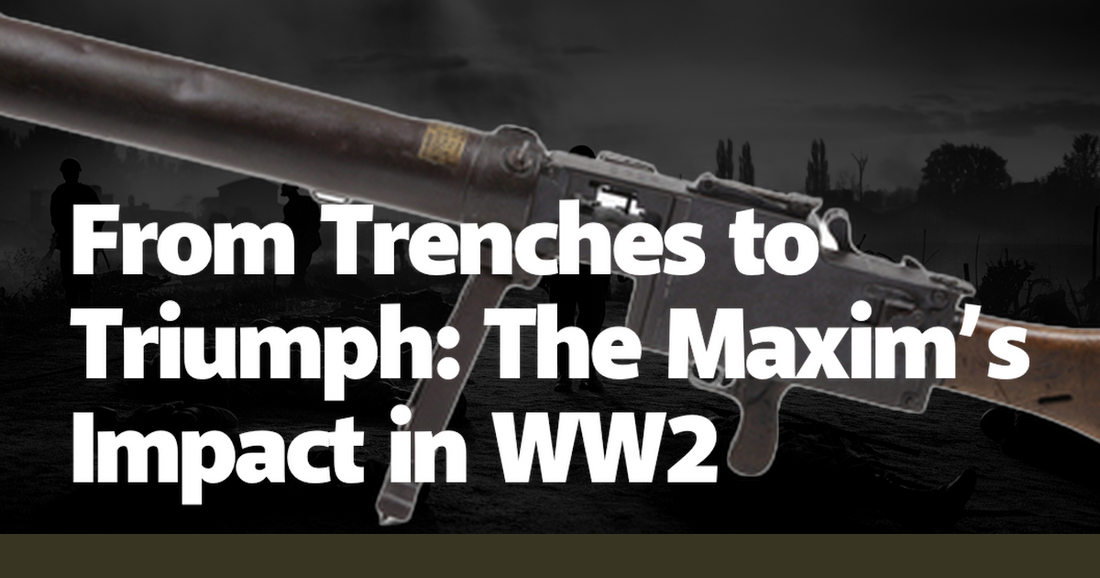The Maxim gun, a revolutionary invention by Hiram Maxim in the late 19th century, fundamentally altered the landscape of warfare. By the time World War II erupted, the Maxim had already proven its devastating efficacy in earlier conflicts, including the Russo-Japanese War and World War I. However, its impact during World War II was both nuanced and profound, as it underscored the evolution of military tactics, the importance of technological innovation, and the brutal reality of industrialized warfare. The Maxim's role, though sometimes overshadowed by more advanced weaponry, remains a testament to the enduring influence of early automatic firearms on modern combat.
During the early stages of World War II, the Maxim gun was a cornerstone of defensive strategies. In the trenches of Europe, where static warfare often dominated, the Maxim's ability to deliver sustained, rapid fire made it a formidable deterrent against advancing troops. German forces, in particular, utilized the MG08, a Maxim variant, to great effect during the invasion of Poland and the subsequent Blitzkrieg campaigns. The MG08's reliability and firepower allowed German infantry units to suppress enemy positions and create corridors for armored divisions to exploit. This synergy between machine guns and mechanized units was a critical component of the Wehrmacht's early successes.
The Soviet Union also recognized the Maxim's value, employing the PM M1910 variant extensively throughout the war. Soviet soldiers, often facing numerically superior German forces, relied on the Maxim to level the playing field. The PM M1910, mounted on its distinctive Sokolov wheel-mount, became a symbol of Soviet resilience. Stories from the Eastern Front abound with accounts of Maxim crews holding their ground against overwhelming odds, their guns chattering relentlessly in the face of relentless assaults. The Maxim's role in iconic battles such as Stalingrad and Kursk cannot be overstated, as it provided the Red Army with a reliable means of halting German advances and buying precious time for counteroffensives.
In the Pacific Theater, the Maxim's influence was less pronounced but still significant. Japanese forces, who had captured numerous Chinese Maxim guns during their invasions, integrated these weapons into their defensive strategies. On islands like Iwo Jima and Okinawa, Japanese defenders used captured Maxims to fortify their positions, creating deadly kill zones that inflicted heavy casualties on American forces. The brutal efficiency of these machine guns underscored the challenges faced by Allied troops as they sought to dislodge entrenched Japanese defenders from their fortified positions.
Beyond its immediate tactical applications, the Maxim gun also played a role in shaping the broader strategic landscape of World War II. The industrial capacity required to produce and maintain these weapons highlighted the importance of logistics and manufacturing in modern warfare. Nations that could efficiently produce and supply Maxim guns to their frontline units gained a significant advantage. This industrial aspect of the Maxim's impact is exemplified by the Soviet Union's ability to mass-produce the PM M1910, ensuring that even as they suffered staggering losses, they could continually replenish their machine gun units.
The psychological impact of the Maxim gun on soldiers cannot be overlooked. The relentless, staccato rhythm of its firing created an environment of constant tension and fear. For many soldiers, the sound of a Maxim gun in action was synonymous with imminent death. This psychological warfare aspect added another layer to the weapon's effectiveness, as it could demoralize enemy troops and disrupt their cohesion. Anecdotes from veterans often describe the haunting memories of facing a Maxim gun, with its distinctive sound and lethal efficiency leaving an indelible mark on their psyche.
As the war progressed and newer, more advanced automatic weapons were developed, the Maxim gun's prominence began to wane. However, its legacy endured through the lessons it imparted on military strategy and tactics. The principles of sustained automatic fire, the importance of defensive fortifications, and the integration of machine guns with other combat units became foundational elements of modern military doctrine. The Maxim gun, in many ways, laid the groundwork for the development of subsequent generations of automatic weapons that would continue to shape the future of warfare.
In the post-war years, the Maxim gun became a symbol of a bygone era, a relic of the brutal and transformative conflicts of the early 20th century. Yet, its impact on World War II remains a crucial chapter in the history of military technology. The Maxim's journey from the trenches of World War I to the battlefields of World War II is a story of innovation, adaptation, and the relentless pursuit of tactical superiority. It serves as a reminder of how a single invention can alter the course of history, influencing the outcomes of battles and the fates of nations.

